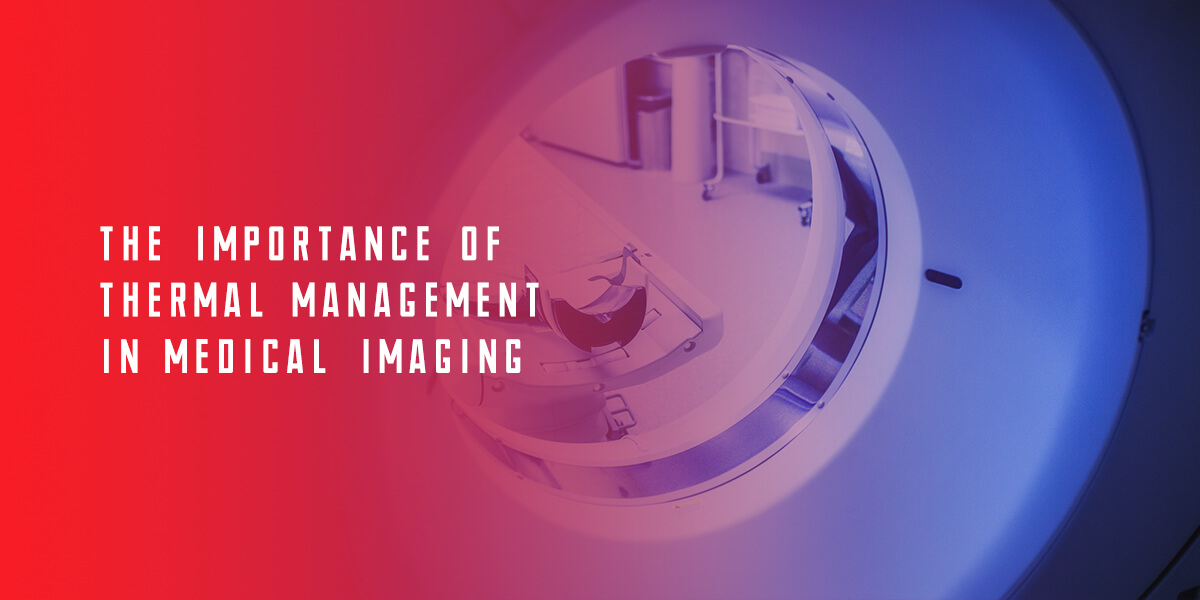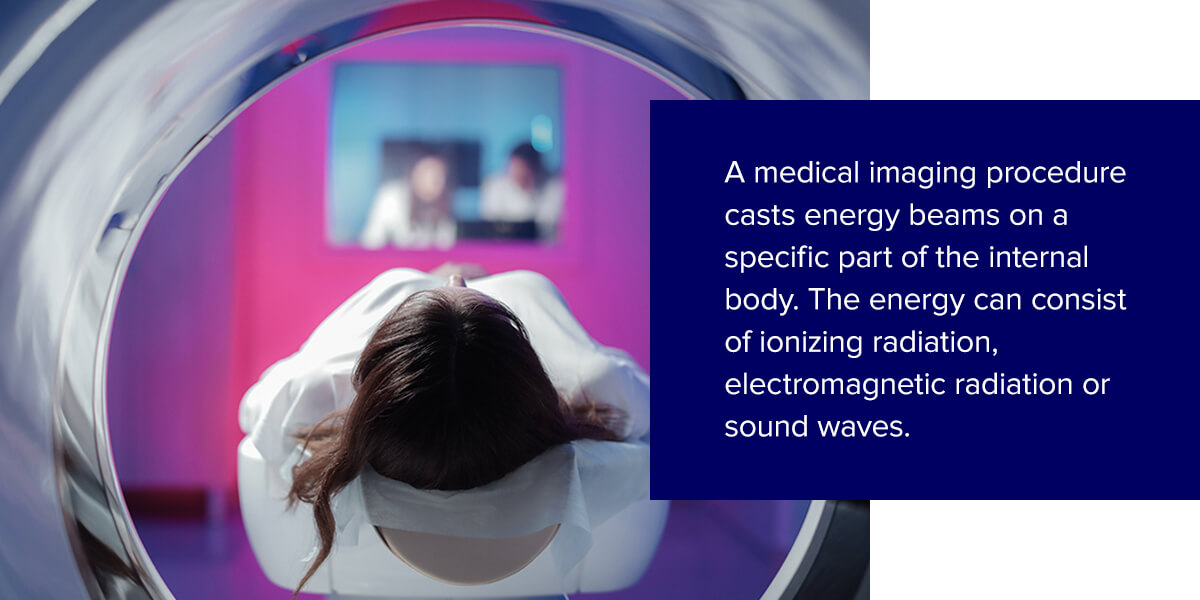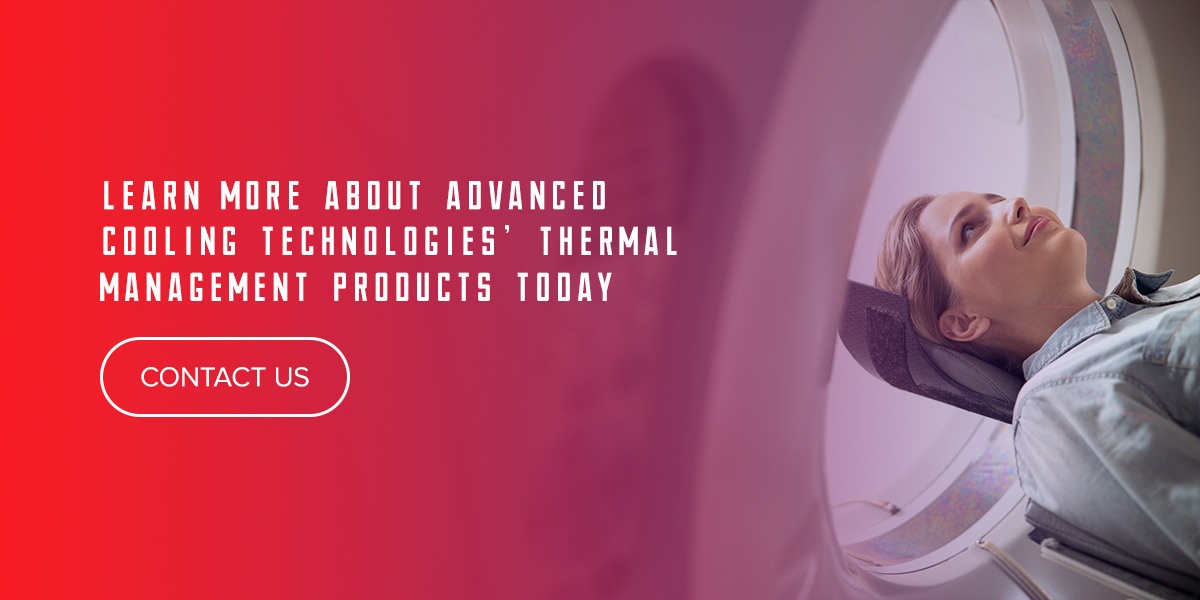The Importance of Thermal Management in Medical Imaging

Medical imaging is an essential practice in the medical field. Healthcare providers can use various imaging procedures to view detailed visuals of a patient’s internal body. These images allow them to diagnose conditions or decide upon treatment. From X-rays to ultrasounds, health professionals use various imaging methods.
It’s critical to use thermal management techniques to keep imaging technology running correctly. The right thermal management strategies keep machines running steadily and at stable temperatures.
But what is medical thermal management, and how does it work? Here is an overview of medical imaging and thermal management.
What Is Medical Imaging?
Medical imaging is a helpful tool for diagnosing and treating diseases in patients. Many illnesses affect internal areas of the body that can’t be seen without additional equipment. Healthcare professionals can view depictions of internal organs and other body parts by using an imaging device. They can then use these pictures for:
- Diagnosing a patient’s condition: Many doctors prescribe an imaging test after a patient reports certain symptoms. Doctors or other healthcare officials can use the images to give an official diagnosis.
- Moving forward or adjusting a treatment plan: These procedures also allow doctors to view a patient’s response to medicine or treatment. The visuals can guide them on whether they should maintain a current treatment plan or alter it.
- Screening for other diseases: Some patients undergo regular medical imaging tests to ensure they haven’t developed various conditions.
There are many different types of imaging procedures, each usually focusing on a specific body part. Here are some examples:
- X-rays: A common medical imaging device, X-rays can scan most body parts.
- Computerized tomography scans: A CT or CAT scan combines a series of X-rays to create cross-sectional images.
- Magnetic resonance imaging: MRI devices also create highly detailed and three-dimensional images.
- Mammograms: Mammograms provide an X-ray image of breasts. Doctors typically use them to detect early signs of breast cancer.
- Nuclear medicine: Nuclear medicine is a specialized radiology field that uses tiny amounts of radiation to examine organs.
- Ultrasounds: Commonly used for pregnancies, ultrasounds also create pictures of the inside of the body.

How Does Medical Imaging Work?
A medical imaging procedure casts energy beams on a specific part of the internal body. The energy can consist of ionizing radiation, electromagnetic radiation or sound waves. These waves travel through the air from one side of the body, pass through the body and then strike a detector on the other side. As they move, they remove electrons from atoms and molecules.
When the waves enter your body, different body tissues and structures absorb them. Medical imaging uses “shadows” of the absorbed tissues to create digital visualizations of inside structures.
The tests can show depictions of:
- Internal organs
- Tissue
- Bones
- Blood vessels
Usually, a radiographer performs imaging tests and then gives the results to a doctor for analysis. The doctor then uses the visuals for their intended use, such as evaluating the effectiveness of a medicine.
These imaging tests expose patients to radiation. Over time, consistent exposure to radiation could cause you to develop cancer. Because of this, healthcare professionals only use imaging procedures when necessary.
What Is Thermal Management in the Medical Field?
Thermal management is the process of regulating heat transference in devices and other applications. Most pieces of equipment can only withstand a certain temperature level. Normally, thermal management ensures that heat moves away from the machine and keeps it safe for use. Thermal engineers and professionals use various technologies to manage heat levels in equipment. Without thermal management, the equipment could become unsafe or even catch on fire.
Why do medical devices use thermal management? Medical equipment requires many thermal considerations. Hospital machines and tools need to function properly at all times to help patients in emergencies and with critical needs. The equipment needs thermal regulation so it doesn’t overheat and malfunction.
The medical field is constantly expanding with new discoveries and capabilities. And as healthcare professionals continue to make these developments, they update their medical tools accordingly. Each new piece of machinery has new thermal considerations. As equipment continues to develop, the parts should be designed for maximum performance and accuracy.
How Do Heat Exchangers Work in Medical Imaging?
Medical imaging devices require particular temperature controls. The scanning equipment works more efficiently when at a balanced temperature level. Patients and healthcare professionals come into contact with medical imaging devices, so they must stay at a touch-safe temperature. Medical imaging equipment also needs to remain at ideal thermal levels to deliver the most accurate images possible.
One example of a thermal management strategy is the use of heat exchangers. These devices transfer heat between fluids so a device stays at a consistent temperature.
Other thermal management devices include liquid cooling systems, chiller systems, fans, enclosure cooling and specially designed heat pipes that ensure temperatures stay at safe levels for both personnel and system functionality.
Why Is Thermal Imaging Management Important?
Using the correct thermal imaging management strategy is critical for safety and efficiency. You can ensure that your imaging devices remain precise and safe to use.
Here are more reasons why thermal management is crucial for medical imaging:
- Temperature regulation: With proper thermal management techniques, you keep medical equipment from overheating. Frequent use of devices causes them to rise in temperature, and if these levels become high enough, it could burn a patient or professional. Keeping a consistent temperature keeps the equipment safe and delivers more accurate images.
- Precise results: If a device overheats, it won’t work as efficiently. Medical imaging is a crucial aspect of the medical field, and it relies on precise images. An error could cause a doctor to make an incorrect diagnosis, which would have extreme consequences for the patient. Thermal management methods keep devices running smoothly and at their top performance levels.
- Cost-efficiency: Thermal management also reduces excess heat production, saving healthcare facilities energy costs. These savings also makes it an environmentally-friendly choice by cutting back on energy expenditures.
- Device longevity: These strategies will also help extend your equipment’s life span. Overheating devices are more likely to shut down or crash completely, which results in costly replacements. You can improve device longevity with the proper thermal methods.
Learn More About Advanced Cooling Technologies’ Thermal Management Products Today
At Advanced Cooling Technology, Inc, we understand the necessity of proper thermal management techniques. As a leading manufacturer of thermal management solutions and technology, we can help you find the best strategy for your needs. From the initial design to installation, our dedicated team can guide you through each step of the process.
Contact Advanced Cooling Technologies online today or call us at 717-295-6061 to get started.


